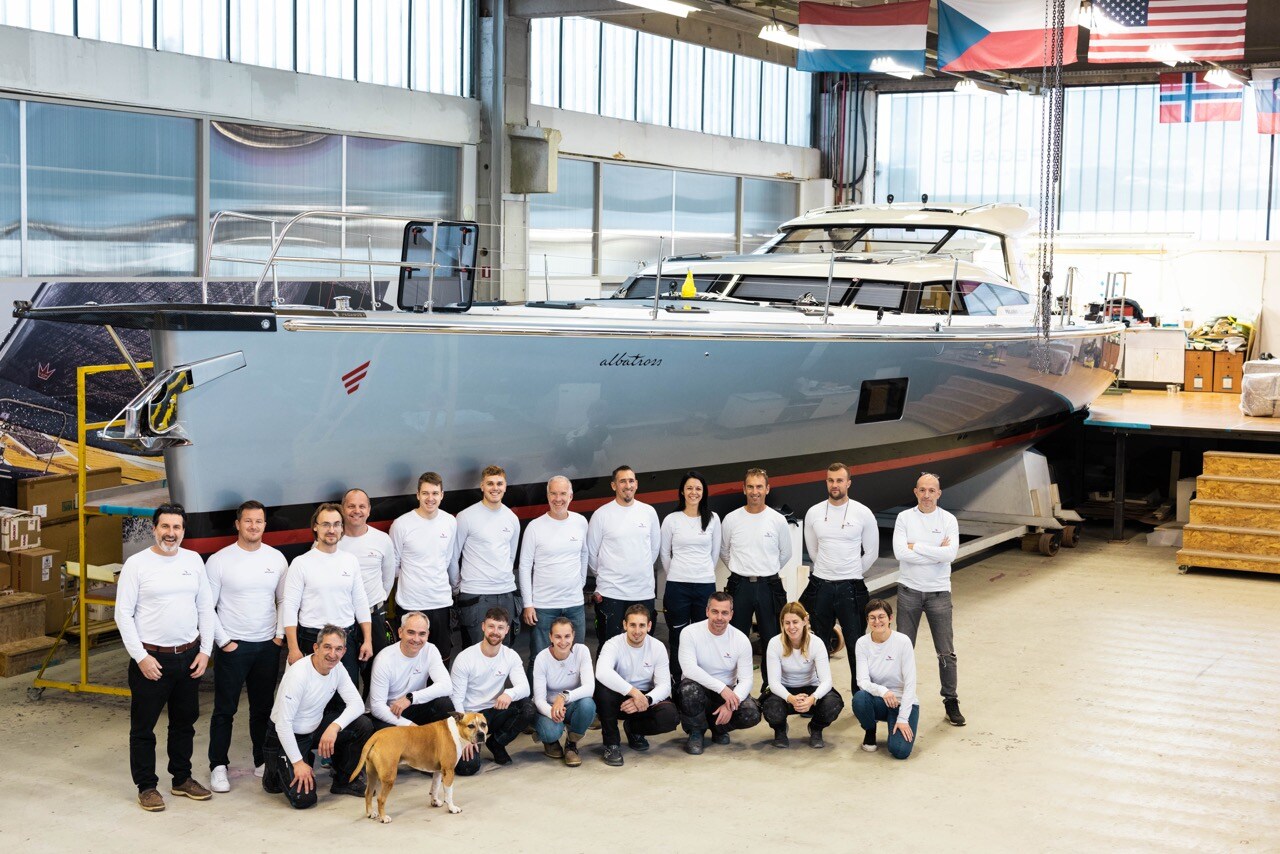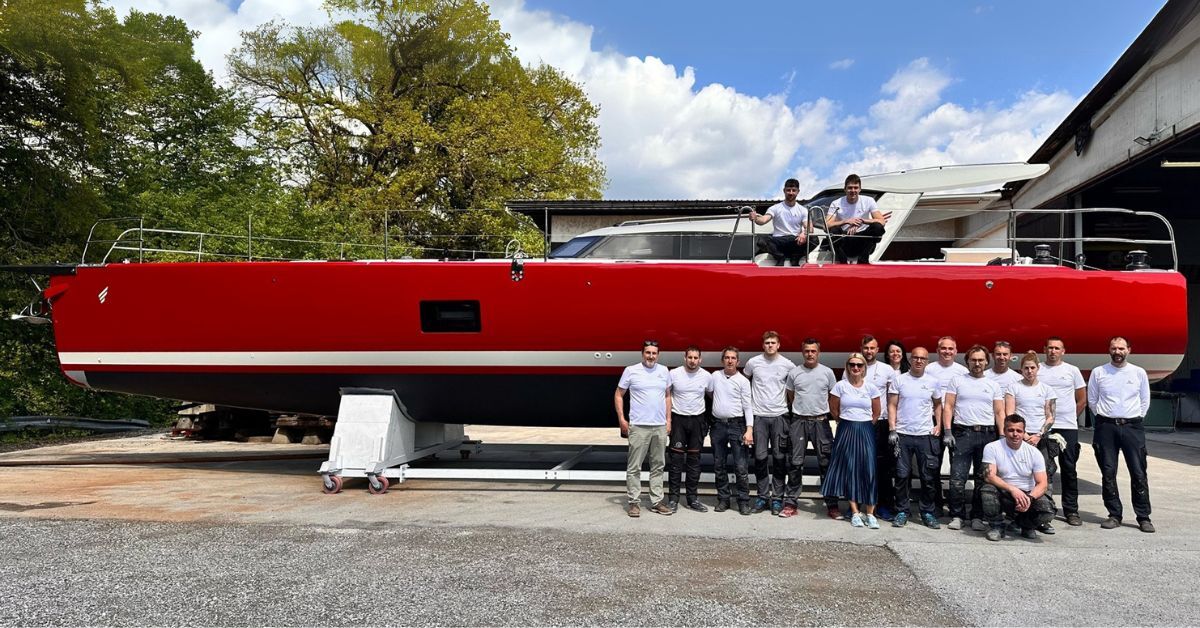Boat design: Cockpit and saloon as connected living space
Great boat design doesn’t just enhance comfort - it transforms the sailing experience, creating harmonious spaces that are practical, ergonomic, and inviting. Pegasus 50 yacht excels in this area with its modern layout. Of course, this comes with some compromises, such as the lack of aft cabins, but this sailing yacht was never intended to be a party boat.
A new perspective on yachting comfort
A seamless transition between indoor and outdoor spaces is a prerequisite for both civilised life on board a yacht and for comfortable passage making. Yet many of the biggest strides in this direction over the past few years have been not in cruising yachts, but in the offshore racing sphere, where the latest IMOCA 60 and Class 40 racing yachts, are leading the way.
In this domain, it’s universally recognised that, for skippers and crew to perform at their best, they must be protected as much as possible from excess sun, as well as having shelter from torrents of water in heavy weather and even occasional rain showers.
While these considerations are, of course, just as relevant for cruising yachts as they are for world-class athletes racing around the globe, only a vanishingly small number of performance cruising yachts offer similar levels of protection. This is where the Pegasus 50 stands out, redefining what it means to blend functionality and comfort in boat design.
The Pegasus 50 yacht’s innovative design
Connecting the saloon and a well-protected cockpit into a single big living space was a fundamental part of the initial vision for the Pegasus 50 and its successful execution marks the yard out as one of the rare few with the confidence to address this issue head-on for performance cruising yachts.
The Pegasus 50’s glazed sliding and angled companionway door is ingenious, eliminating the need for cumbersome washboards, while enabling easy visual contact to be maintained between everyone in the cockpit, saloon, galley and navigation station. The saloon floor is only two steps down from the cockpit, making an almost seamless transition between each of these spaces. It also means everyone inside the boat is at eye level with those in the cockpit.
Enhanced visibility and comfort
Equally, unobstructed 360-degree visibility from the saloon and the navigation station allow a watchkeeper to remain fully inside the boat in inclement weather. In this sense, the layout offers all the benefits of a pilothouse and even in 40 knots of breeze you can enjoy high adrenaline sailing while being certain of remaining comfortable, safe and dry.
This all-around visibility offers further benefits at sea, as the comfort factor is completely different when you can easily see outside, while any tendency towards nausea or sea sickness is massively reduced. Carefully executed natural ventilation further improves comfort and well-being on board, making spending time inside the Pegasus 50 markedly different from the basement-style arrangement of most monohull yachts.
These underlying concepts also make the basics of meal preparation and cleaning up a more comfortable and social task, while the gimballed saloon and table transform life when the boat is heeled. This is an impressively simple arrangement that can be locked upright or at 10 degrees in either direction (gimballed settee), creating an almost level seating area and table on each tack (see the photo in the gallery).
.jpg?width=1200&length=1200&name=pegasus-50-inclusive-spaces-and-easy-communication%20(1).jpg)


.jpg?width=1200&length=1200&name=pegasus-50-gimballed-settee-when-boat-heeling%20(1).jpg)
.jpg?width=1200&length=1200&name=pegasus-50-sliding-door%20(1).jpg)
Lack of aft cabins, but gain easy access to technical spaces
Like many good ideas, the advantages of this arrangement are obvious in retrospect, but it required more than just an industry-leading vision to create a safe, simple and utterly reliable implementation.
Nevertheless, it’s impossible to achieve all of this without some compromises, the main one being a lack of aft cabins. However, the Pegasus 50 was never intended to be a party boat with the maximum number of people possible squeezed into a certain hull length. The aft cabins become technical spaces with all the systems and easy access to them.
Also in my opinion, serious and experienced sailors value the boat’s unique ergonomics when they are awake and know that what’s most important for sleeping is a comfortable, safe and well-organised space, rather than a huge cabin. That means a good mattress with proper lee cloths and well-planned stowage around the bed, but the size of the cabin itself is unimportant – it’s just not where anyone spends the bulk of their waking time on any boat.




